|
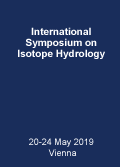
|
 |
|
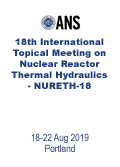 |
 |
|

|
 |
|
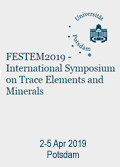
|
 |
|
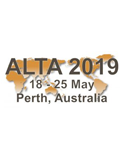
|
 |
| |
 |
| |
| |
|
|
|
|
Si no desea recibir mas este Boletín haga click aqui. |
|
|
|
|
|
|
|
|
|
|
|
|
|
|
|
 |
 |
 |
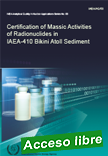 |
Certification of Massic Activities of Radionuclides in IAEA-410 Bikini Atoll Sediment
IAEA Analytical Quality in Nuclear Applications Series, 2018, 72 p.
The accurate and precise determination of radionuclide concentrations in marine samples is an important aspect of marine radioactivity assessment and the use of radionuclides in studies of oceanographic processes. To address the problem of data quality, the IAEA Environment Laboratories (IAEA-EL) |
in Monaco regularly conduct characterization studies aimed to assign values to reference materials for radionuclides and other components in different matrices of marine samples as an integral part of the Sub-programme IAEA Reference Products for
Science and Trade.
The sediment was collected during the "IAEA ´97 Pacific Ocean Expedition" on board
of research vessel Bosei Maru, which took place from 21 October to 20 November 1997, with sampling stationsbat Bikini and Eniwetok atolls. The Japan Meteorological Agency and Tokai University were among the collaborating institutes.
As the sample was collected in the Pacific Ocean, elevated levels of long lived anthropogenic radionuclides (such as 137Cs) were expected due to the influence of historical atmospheric nuclear weapon tests. Participants were informed that the expected activities for anthropogenic radionuclides would be in the ranges:
Gamma emitters 0.1 0.5 kBq kg-1
Transuranic 0.01 0.5 Bq kg-1
This report describes the results on anthropogenic and natural radionuclide determinations in sediment obtained from 27 selected laboratories (including IAEA-EL and five laboratories belonging to CELLAR1) which will allow the IAEA-EL to produce a new certified reference material IAEA-412 following ISO guidelines.
|
 |
 |
Radiation Protection of the Public and the Environment - General Safety Guide
IAEA Safety Standards Series, 2018, 51 p.
This Safety Guide provides guidance on the implementation of the requirements in the International Basic Safety Standards, IAEA Safety Standards Series No. GSR Part 3, in relation to protection of the public and the environment against radiation risks. It provides generic guidance on the application of the radiation protection principles of justification, of optimization of protection and safety, and of dose limits. |
The publication covers the protection of the public and the environment in all exposure situations — planned, emergency and existing.
|
 |
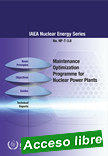 |
Maintenance Optimization Programme for Nuclear Power Plants
IAEA Nuclear Energy Series, 2018, 48 p.
This publication deals with the latest nuclear power plant maintenance optimization programmes and provides key requirements and strategies for successful implementation. It documents shared proven maintenance optimization methods and techniques from Member States, including more detailed examples in the annexes of this publication.
|
|
 |
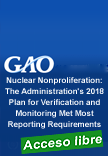 |
Nuclear Nonproliferation: The Administration's 2018 Plan for Verification and Monitoring Met Most Reporting Requirements but Did Not Include Future Costs and Funding Needs
Government Accountability Office (GAO - US), Jun Sep 14, 2018, 24 p.
Countering the proliferation of nuclear weapons is a national security priority that is challenged by weapons advances from existing nuclear states and other actors possessing or attempting to possess nuclear weapons. |
To help address these issues, Congress directed the Administration in 2015 and 2017 to develop a plan for verification and monitoring relating to the potential proliferation of nuclear weapons, components of such weapons, and fissile material. GAO reviewed the first plan submitted to Congress in 2015, and an update submitted in 2017. GAO reported in March 2018 that this plan and update generally did not address the congressionally mandated reporting requirements.
In the fiscal year 2018 NDAA, Congress directed the Administration to develop another plan and included a provision for GAO to review the plan. This report assesses whether the Administration's new plan provided details on the reporting requirements included in the NDAA.
To determine whether the plan provided details on the reporting requirements, GAO reviewed the fiscal year 2018 plan and assessed whether the plan included details for each of the elements as required by the NDAA.
|
 |
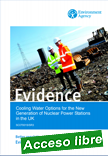 |
Cooling Water Options for the New Generation of Nuclear Power Stations in the UK
Environment Agency (UK), 2018, 214 p.
The Health and Safety Executive (HSE) and Environment Agency are working together to make sure that any nuclear power station built in the UK meets high standards of safety, security, environmental protection and waste management (Generic Design Assessment, GDA). |
There is a need to investigate cooling water options for new reactors and evaluate the environmental impact of these in terms of thermal, chemical and radionuclide pollution, and impact on biota. This document draws together information that will assist the regulatory agencies in this process.
|
 |
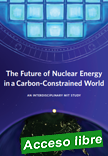 |
The Future of Nuclear Energy in a Carbon-Constrained World
Massachusetts Institute of Technology (MIT), 2018, 272 p.
The Future of Nuclear Energy in a Carbon-Constrained World study is the eighth in the MIT Energy Initiative’s Future of series, which aims to shed light on a range of complex and important issues involving energy and the environment. A central theme is understanding the role of technologies that might contribute at scale in meeting rapidly growing global energy demand in a carbon constrained world.
|
Nuclear power could certainly play an important role, and it was the subject of the first of these interdisciplinary studies at MIT—the 2003 Future of Nuclear Power report. More recent studies have looked at the roles of CO2 sequestration, natural gas, the electric grid, and solar power. Following a 2009 update to the original nuclear study, now is an appropriate time to take a fresh look at nuclear, given advances in inherently safer technologies, a sharpened focus on the need to reduce CO2 emissions in the energy sector, and challenges of cost and public perceptions of safety.
The study is designed to serve as a balanced, fact-based, and analysis-driven guide for stakeholders involved in nuclear energy. Policy makers, utilities, existing and startup energy companies, regulators, investors, and other power-sector stakeholders can use this study to better understand the challenges and opportunities currently facing nuclear energy in the U.S. and around the world. The report distills results and findings from more than two years of primary research, a review of the state of the art, and quantitative modeling and analysis.
|
 |
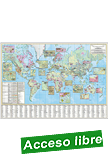 |
World Distribution of Uranium Deposits. Second Edition
IAEA Non-serial Publications, 2018, s. p.
In 1995 the International Atomic Energy Agency published a hard copy map of World Distribution of Uranium Deposits, in collaboration with the Geological Survey of Canada. This second edition of the World Distribution of Uranium Deposits presents new information, such as additional deposits, a broader range of deposit sizes, a revised deposit classification system and improved geological visualisation information. The online pdf version also includes enhanced functionality with layers and query capability. |
|
 |
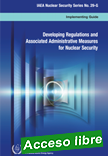 |
Developing Regulations and Associated Administrative Measures for Nuclear Security - Implementing Guide
IAEA Nuclear Security Series, 2018, 60 p.
This publication aims to assist States to identify the responsibilities of those involved in nuclear security so that suitable regulations, agreements and associated administrative measures may be developed for establishing and sustaining an effective nuclear security regime. |
The publication is structured to provide an overview of the most important aspects to be covered by a State’s legislative and regulatory framework for governing nuclear security. States may therefore use this publication to undertake a gap analysis of their legislative and regulatory framework for nuclear security in order to take actions to update their framework as necessary.
|
 |
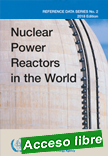 |
Nuclear Power Reactors in the World - 2018 Edition
IAEA Reference Data Series, 2018, 79 p.
Nuclear Power Reactors in the World is an annual publication that presents the most recent data pertaining to reactor units in IAEA Member States.
This thirty-eighth edition of Reference Data Series No. 2 provides a detailed comparison of various statistics up to and including 31 December 2017. The tables and figures contain the following information: - General statistics on nuclear reactors in IAEA Member States;
|
- Technical data on specific reactors that are either planned, under construction or operational, or that have been shut down or decommissioned; - Performance data on reactors operating in IAEA Member States, as reported to the IAEA.
The data compiled in this publication are a product of the IAEA’s Power Reactor Information System (PRIS). The PRIS database is a comprehensive source of data on all nuclear power reactors in the world. It includes specification and performance history data on operational reactors as well as on reactors under construction or in the decommissioning process. Data are collected by the IAEA via designated national correspondents in Member States.
PRIS outputs are available in the IAEA’s annual publications and on the PRIS web page (http://www.iaea.org/pris).
Detailed outputs are accessible to registered users through on-line applications.
|
 |
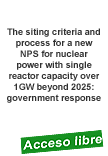 |
The siting criteria and process for a new NPS for nuclear power with single reactor capacity over 1GW beyond 2025: government response
Department for Business, Energy & Industrial Strategy (UK), 7 December 2017, 79 p.
National Policy Statements (NPS) establish the case for Nationally Significant Infrastructure Projects, as defined in the Planning Act 2008. The current nuclear power NPS lists 8 sites as potentially suitable for the deployment of new nuclear power stations by the end of 2025.
|
We are considering the planning framework for nuclear power generation for the long term by starting work towards a new NPS for nuclear power generation for deployment after 2025. The first step towards this new NPS is to consult on the process and criteria for designating potentially suitable sites for the deployment of new nuclear power stations between 2026 to 2035 and with over 1GW of single reactor electricity generating capacity. There will be a further consultation on the draft NPS, which will build on the outcome of this consultation.
As part of the designation of the NPS, an Assessment of Sustainability (AoS) will also be undertaken. The scoping report on the AoS sets out how it will be undertaken, the level and type of information it will cover, and how it will be integrated into the development of the proposed new NPS for nuclear. In accordance with Regulation 12(5) of the Environmental Assessment of Plans and Programmes Regulations 2004, only specific statutory consultees are being consulted on the AoS Scoping Report. However, we have made the scoping report publicly available on this page, for information purposes only.
We are keen for views on the proposed process and criteria from industry, local authorities, regulators and non-departmental public bodies, NGOs and local residents.
|
 |
 |
Nuclear Sector Deal - A Sector Deal between government and the nuclear industry
Nuclear Industry Council (UK), 27 June 2018, 23 p.
The UK’s civil nuclear sector is amongst the most advanced in the world, from fuel production, generation, new build, research through to decommissioning, waste management and transportation and our worldclass regulatory system – it is an industry which offers much for the future. Its economic footprint provides tens of thousands of highly skilled jobs, many in the north west and south west of England, driving growth in diverse regions across the UK and there is potential for further growth in other regions of the UK, helping develop a workforce which combines experience, skills and technology.
|
The existing fleet of nuclear power stations provides more than 20 per cent of the country’s electricity: low-carbon, reliable and affordable power for homes, businesses and public services. A combination of lowcarbon power sources has helped the UK reduce our carbon emissions and will be important in maintaining that progress as there is greater electrification of heat and transport. This Sector Deal recognises the potential to build on that record and deliver the objectives set out in the Industrial Strategy. In particular, it shows where greater collaboration by the sector, with the right support from the government, can help meet our Clean Growth Grand Challenge. It presents an opportunity to radically improve our industrial productivity, while still delivering affordable, reliable and always available nuclear power through: `` a new approach to building power plants — with a target for a 30 per cent reduction in the cost of new build projects by 2030;
a long-term vision of innovation-led growth that delivers successively lower generation costs and a 20 per cent reduction in decommissioning costs to the taxpayer; a more competitive supply chain, with more UK companies using advanced manufacturing methods and entering domestic and export markets for nuclear goods and services. This deal supports the government’s aims for a modern industrial strategy by extending our nuclear excellence into the future, driving improved industrial productivity and making the UK one of the most competitive places to grow a business. It also supports: growth of a highly skilled workforce; a globally unique stock of technology and skills which will benefit other industries and services and which has significant potential in overseas markets; a lasting contribution to the communities that are host to nuclear facilities, both current and future. This Sector Deal has been developed by the Nuclear Industry Council – whose membership is drawn from across energy, manufacturing, engineering, science and research – in partnership with the government. It is a commitment by the sector to work collectively, with support from government, to deliver on the Industrial Strategy, drive clean growth throughout the economy and make civil nuclear power an integral part of the UK’s energy future.
|

|
|
|
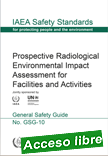 |
Prospective Radiological Environmental Impact Assessment for Facilities and Activities
IAEA Safety Standards Series, 2018, 82 p.
This Safety Guide provides recommendations and guidance on a general framework for performing prospective radiological impact assessments for facilities and activities, to estimate and control the radiological effects on the public and on the environment. This radiological environmental impact assessment is intended for planned exposure situations as part of the authorization process and, when applicable, as part of a governmental decision making process for facilities and activities.
|
The situations covered in the assessment include both exposures expected to occur in normal operation as well as potential exposures. The assessment of the radiological impacts includes consideration of the risk of radiation effects for humans and for populations of non-human biota. Guidance is provided on the assumptions and input data to be used, the necessary models for environmental transfer and radiation dose assessment and the definition and use of criteria for informing decisions.
|
| |
| |
|
|
| |
| |
|
|
| |
| |
|
|
|
|
|
|
|
